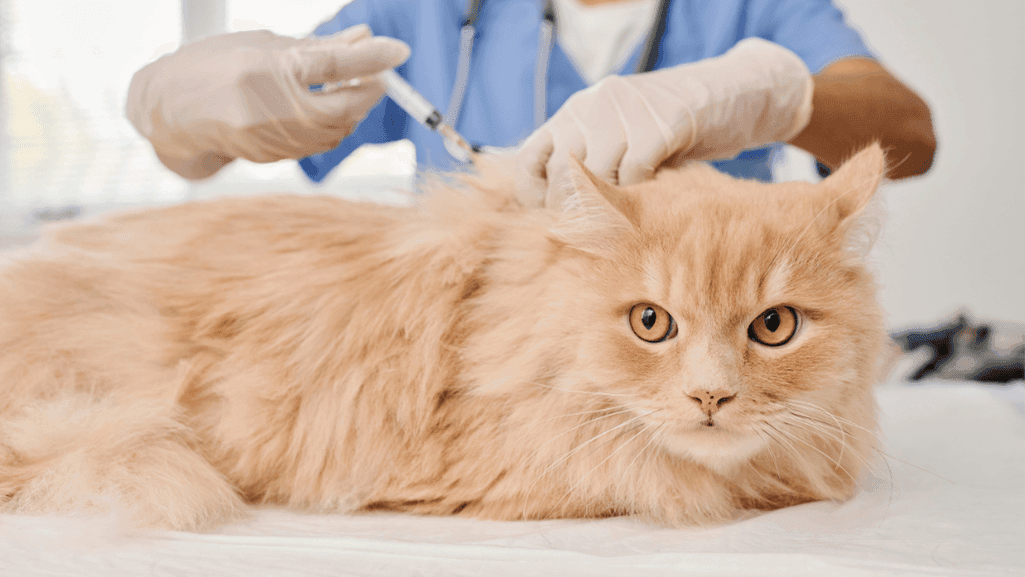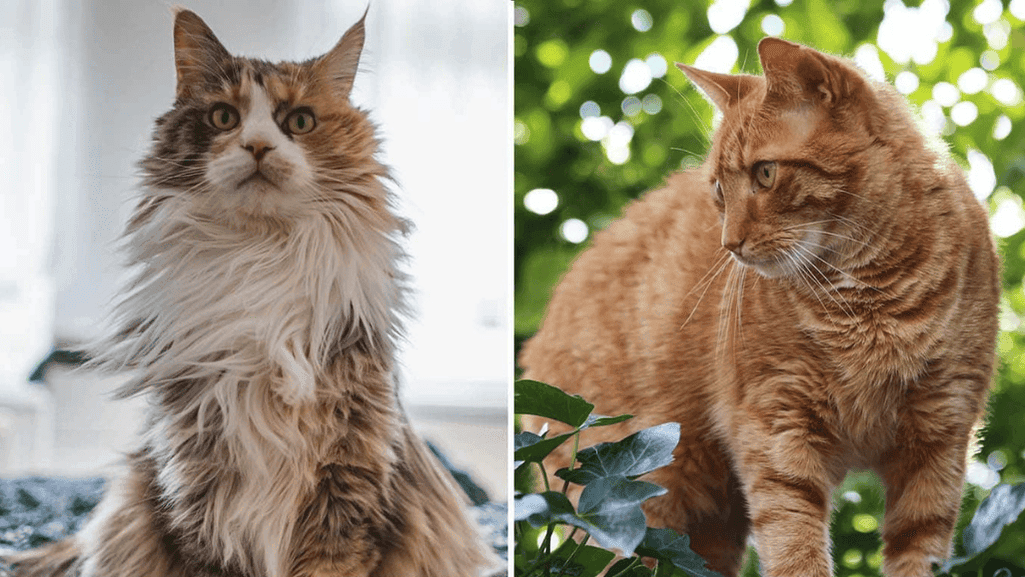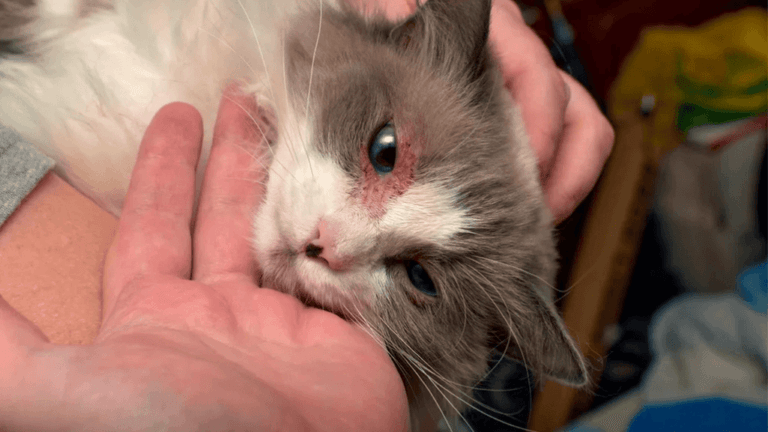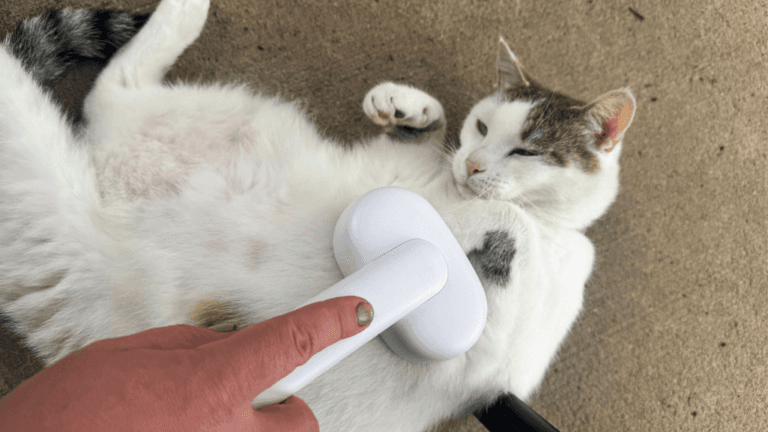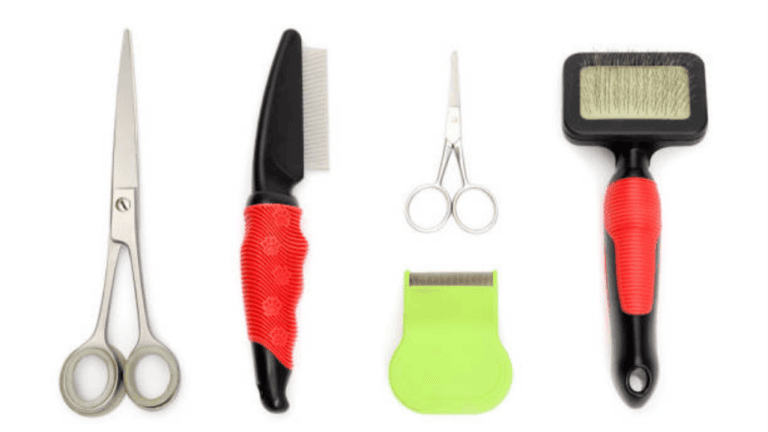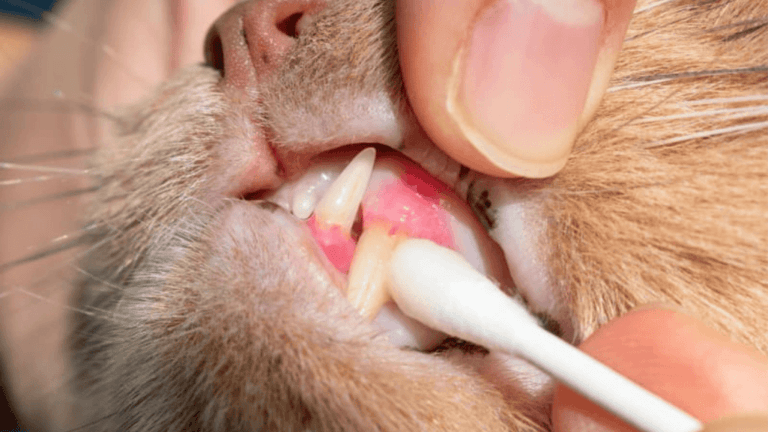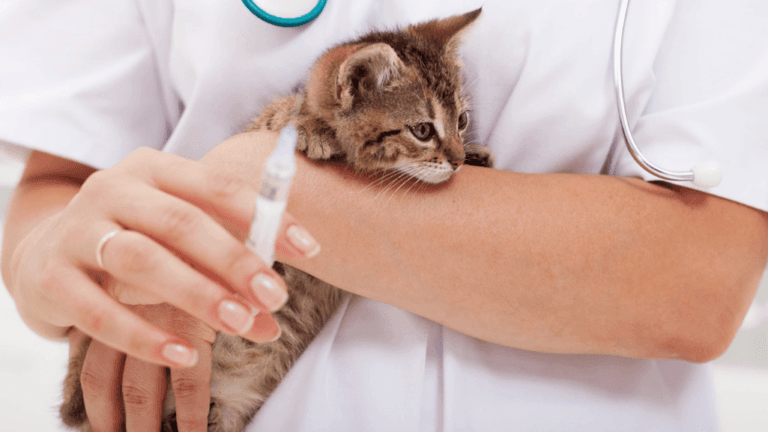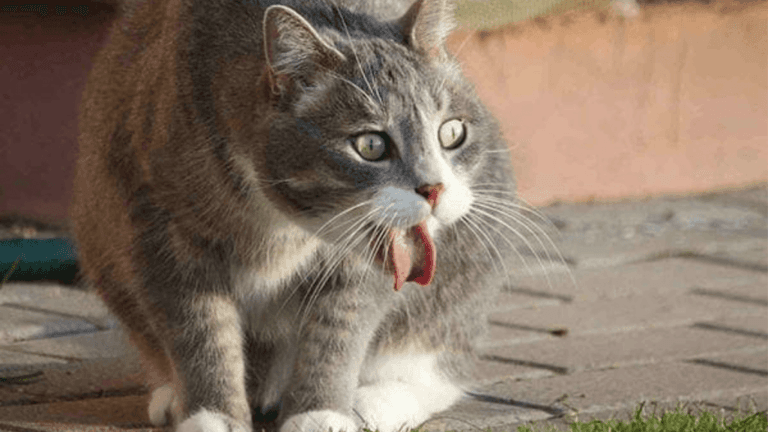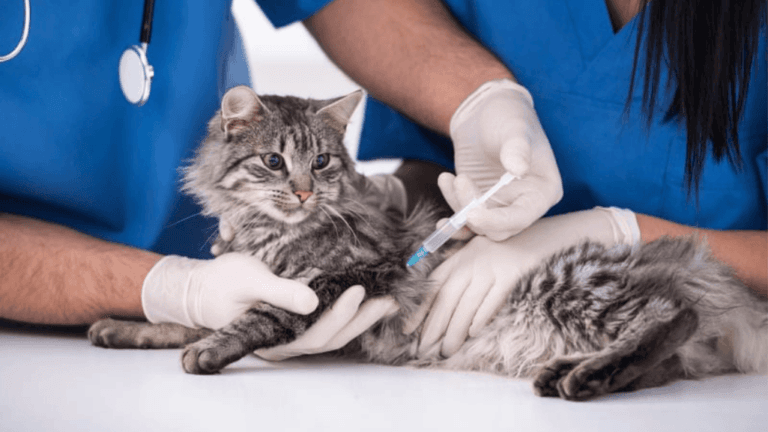As a cat owner, keeping your pet healthy is very important. Protecting them from deadly diseases like rabies is key. Rabies attacks the nervous system and can be fatal. It spreads through bites from infected animals, making rabies prevention in cats vital for everyone’s safety.
Getting rabies shots for cats is both a law in many places and a lifesaver. The vaccine helps your cat fight off rabies if they get bitten. It’s a safe and effective way to keep your cat safe from this deadly disease.
Keeping cats safe from rabies means regular vaccinations. Kittens get their first shots early, and then they need boosters as adults. How often depends on where you live, your cat’s life, and the vaccine type.
Key Takeaways
- Rabies is a deadly viral infection that affects the nervous system of cats and other mammals.
- Rabies shots for cats are critical for protecting their health and stopping the disease’s spread.
- Cat rabies vaccination is often required by law to protect public health.
- Kittens should get their first rabies vaccine at 8-12 weeks, with regular boosters needed.
- How often adult cats need rabies shots depends on local laws and the vaccine type.
Understanding Rabies in Cats
Rabies is a serious and contagious viral disease that affects cats and other mammals. As a cat owner, knowing about rabies is key to keeping your pet safe. Cats can get rabies from bites by infected animals like skunks, foxes, bats, and raccoons.
What is Rabies?
Rabies is a viral disease that attacks the brain of mammals, including cats. It spreads through the saliva of infected animals, usually through bites. Once inside, the virus goes to the brain, causing inflammation and death if not treated. Rabies is fatal in unvaccinated pets, and treatment options are limited once symptoms appear.
How Rabies Spreads in Cats
Cats can get rabies from bites by infected animals. Outdoor cats face more risks, but indoor cats can also get it. Bats, which can sneak into homes, are a risk for indoor cats. Rarely, rabies can spread through non-bite exposures.
“Rabies is zoonotic, meaning it can be transmitted from animals to humans through bites.” – World Health Organization
Symptoms of Rabies in Cats
The time it takes for rabies to show in cats can range from ten days to over a year. Death usually happens within ten days after symptoms start. Symptoms go through three stages:
- Prodromal stage: Mild fever, loss of appetite, and changes in behavior.
- Furious stage: Aggression, disorientation, seizures, and a lot of saliva.
- Paralytic stage: Weakness, paralysis, and trouble breathing, leading to death.
If you think your cat has rabies or shows symptoms, call your vet right away. Rabies can only be confirmed by examining the brain after death.
Importance of Rabies Vaccination for Cats
Vaccinating your cat against rabies is key to keeping them healthy and stopping the spread of this deadly disease. Rabies can move from animals to humans and is just as deadly for people as it is for cats. It kills nearly 60,000 people worldwide each year, mostly children.
In the United States, over 250 cats get rabies every year. This small number shows how important it is to give cats rabies shots. Vaccinating your cat protects them and stops rabies from spreading to other animals and people.
Protecting Your Cat’s Health
The rabies vaccine is very good at keeping cats safe, even if it’s not 100% effective. Side effects can include a mild fever, less appetite, feeling tired, soreness, and swelling where the shot was given. Rarely, cats might have allergic reactions or develop sarcomas at the injection site. But, less than 0.001% of cats have allergic reactions to modern rabies vaccines.
Preventing the Spread of Rabies
Vaccinating your cat not only keeps them safe but also stops rabies from spreading. If an unvaccinated cat might have rabies, it must be put down or kept in strict quarantine for at least four months. By making sure your cat gets their shots, you can avoid these sad situations.
Legal Requirements for Cat Rabies Vaccination
In most US states, including New York, feline rabies laws say all cats over 6 months must get rabies shots. These rabies laws for cat owners are to keep everyone safe, as rabies is a big risk for both animals and humans. It’s important to know the pet rabies requirements in your area and follow them to avoid legal trouble.
Core and Non-Core Cat Vaccines
Protecting your cat’s health is key. Knowing the difference between core and non-core vaccines is important. Core vaccines are for all cats, while non-core vaccines depend on a cat’s lifestyle and risk.
The Feline Veterinary Medical Association (FelineVMA) says kittens and adult cats need core vaccines. These include:
- Feline panleukopenia virus
- Feline viral rhinotracheitis (FHV-1)
- Feline caliciviruses
- Rabies virus
- Feline leukemia virus (FeLV)
Non-core vaccines are for cats at risk of certain diseases. These include:
- Chlamydophila felis
- Bordetella bronchiseptica
- Feline leukemia virus (FeLV) in adult cats
Some vaccines, like for Feline Infectious Peritonitis (FIP), are not recommended by the FelineVMA. But they might be used in special cases. Most studies show FIP vaccines don’t work well. Vaccines for ringworm in cats also don’t work.
Kittens start getting vaccinated at six to eight weeks old. They need booster shots every three to four weeks until they’re 16-20 weeks old. Adult cats who got all their shots as kittens should get a booster a year later. Then, they need boosters every one to three years, based on their lifestyle.
Low-risk adult cats should get core vaccine boosters every three years, says the FelineVMA.
It’s important to vaccinate your cat at the right time, like kittens. This is because they’re most at risk of diseases. Kittens under six months old should get non-core vaccines like Feline Leukemia Virus (FeLV).
Rabies Shots for Cats
Keeping your cat safe from rabies is key to being a good pet owner. Rabies is a deadly virus that harms the nervous system. It can spread to humans through bites or scratches from sick animals. Luckily, feline rabies vaccines work well to stop this serious disease.
Initial Kitten Vaccination
Kittens need their first rabies shot between 12 to 16 weeks old. This first shot helps them fight off the virus. Kittens also get shots for other diseases like distemper and viral rhinotracheitis. Your vet might suggest extra shots for outdoor cats or those around other cats.
Adult Cat Vaccination
After the first kitten rabies shots, adult cats get a booster shot a year later. The type of vaccine decides how often they need shots. Your vet will pick the best schedule for your cat’s life and health.
Booster Recommendations
Keeping up with cat rabies boosters is important for your pet’s safety. The need for shots depends on local laws, the vaccine, and your cat’s health. Even indoor cats need shots because they could get outside or meet wild animals. Talk to your vet to make a plan that fits your cat’s life.
“Regular rabies vaccinations are essential to prevent the spread of the virus to humans and other animals.” – The Heart of Chelsea Veterinary Group
It’s important to know and follow local laws about rabies shots. This keeps your cat and others safe. By working with your vet, you can keep your cat safe from rabies.
Cat Vaccination Schedule
Keeping your cat’s vaccinations up-to-date is key to their health. It stops them from getting sick and keeps others safe too. A good cat vaccination schedule is vital for kittens and adult cats. It guards them against serious diseases.
Kitten Vaccination Timeline
Kittens start their shots at 6-8 weeks old. They need boosters every 3-4 weeks until they’re 16-20 weeks old. The first shots include:
- Feline Viral Rhinotracheitis (Herpesvirus)
- Calicivirus
- Panleukopenia (Feline Distemper)
- Rabies
Kittens might also get non-core vaccines like Feline Leukemia Virus (FeLV). The cost of each shot is $25 to $50. The first vet visit can cost $40-$60.
Adult and Senior Cat Vaccination Timeline
Adult cats need booster shots a year after their kitten series. Then, they get shots every 1-3 years. Core vaccines for adults include Feline Viral Rhinotracheitis, Calicivirus, Panleukopenia, and Rabies. Outdoor cats might need FeLV too.
Senior cats might need special vaccines based on their health and lifestyle. Your vet can suggest the best schedule for your older cat.
Many states require cats over 6 months old to be vaccinated against rabies, even if they are indoor pets.
Following a proper vaccination schedule keeps your cat healthy and safe. Talk to your vet to create a plan that fits your cat’s needs.
Factors Affecting Cat Vaccination Needs
Keeping your cat healthy and safe is key. Knowing what affects their vaccination needs is important. Lifestyle, where you live, and more influence the best feline rabies protocols for your cat.
Indoor vs. Outdoor Cats
Whether your cat stays indoors or goes outside affects their vaccination needs. Indoor cats face less risk but should get vaccinated to stay safe. Outdoor and stray cats are at higher risk and need regular shots. Stray cat rabies concerns are big because these cats often don’t get vaccinated regularly.
Health Issues and Vaccination Schedules
Your cat’s health can change their vaccination plan. Cats with health problems or past vaccine issues might need special care. Talking to your vet is key to find the right plan for your cat.
Regional Rabies Risks
Rabies risk in your area is also important. Some places have more rabies in wild animals. Knowing this helps you keep your cat safe. Your vet can tell you how often to vaccinate based on local risks.
“Vaccinating your cat against rabies is not only essential for their health but also a critical step in preventing the spread of this deadly disease to other animals and humans.”
Working with your vet is the best way to ensure your cat gets the right shots. They consider your cat’s lifestyle, health, and local risks to create a plan. By being informed and proactive, you can help your cat live a long, happy life.
Cat Vaccine Side Effects and Risks
Vaccinating your cat against rabies is key for their health and safety. It’s vital to know about cat rabies shot side effects and feline rabies vaccine risks. Even though serious reactions are rare, knowing these risks helps you watch your cat’s health after the shot.
Most cats only have mild side effects from vaccines, like:
- Soreness or swelling at the injection site
- Lethargy or decreased activity
- Decreased appetite
- Low-grade fever
These side effects usually go away in a few days. But, in rare cases, cats can have more serious reactions, like allergic responses or injection-site sarcomas. These sarcomas are very rare, happening in about 1 in 10,000 to 30,000 cats.
Only about 0.52% of cats (52 in 10,000) have side effects from vaccines. This might sound scary, but remember, 9,990 to 9,999 out of 10,000 cats won’t have serious side effects. The benefits of keeping your cat safe from rabies are much greater than the risk of bad reactions.
“Aggressive first-time surgery, either before or after definitive radiation therapy, has been shown to be valuable in the treatment of injection-site sarcomas in cats.”
To lower the risks of feline rabies vaccine, talk to your vet about the best vaccination schedule for your cat. Regular check-ups are key for catching and treating any vaccine-related problems early. By being informed and proactive, you can keep your cat healthy and safe from rabies.
Conclusion
Rabies vaccination is key for cat owners to keep their pets safe. It protects cats and people from a deadly disease. Knowing the importance of rabies shots and following vaccination schedules is essential.
Factors like lifestyle and health risks should guide your cat rabies protection plan. Always talk to a vet to make sure your cat is well-protected.
Keeping cats safe from rabies means using core and non-core vaccines. The FVRCP and rabies vaccines are most important. Kittens need several shots in their first year, and adult cats need yearly boosters.
Outdoor cats and those in risky areas might need extra shots. For example, the Feline Leukemia (FeLV) vaccine. This ensures they are fully protected.
Knowing local rabies laws is important for keeping cats safe. Regular vet visits and following vaccination schedules help. They not only protect cats but also the community.
By focusing on rabies vaccination, cat owners can have many happy years with their pets. It’s a big part of keeping them healthy and safe.



